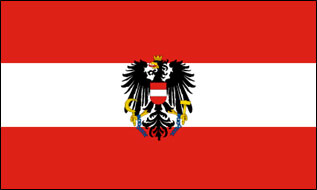 Austrian Champions
Austrian Champions

Be forewarned however, that the soccer tradition in Austria is a bit strange, to put things mildly. The basic premise is that all clubs must change their name every couple of years, so whenever you begin to know a club, it gets merged with somebody else and you have to start all over again. If the Euro-Super-Liga ever takes off, look for the whole country to merge into one club and play mediocre soccer on the European stage, instead of just locally. However, once get over the fact that the intensity level in soccer (and everything else, for that matter) in Austria is much lower than Germany, there are plenty of attractive clubs and sights to seek out.
Of course, it wasn't always this grim. Austria, especially Wien, was once the center of continental football. From the "coffee-house intellectuals" of Austria Wien to the proletarian Rapid, these clubs were among the continental elite. The Austrian national squad during the late 1920s-1930s was known as the Wunderteam, almost unbeatable. Of course the Nazi occupation ended all that, and in reality, Austrian soccer hasn't ever recovered.
The Austrians have organized national championships since 1911, but until 1965, the champions came exclusively from Wien (Vienna). LASK from Linz was the first winner not from the capital. Part of the reason was that until 1949, only clubs from Wien participated, as that city's federation organized the championship.
From 1949-65, the national Staatsliga, organized under the auspices of the ÖFB (Austrian Soccer Federation), was the highest national championship. It was quasi-independent, run by the clubs. In 1966, the ÖFB took back control, with the formation of the Nationalliga. The intent was to model after it's German counterpart, and introduce financial controls. Among the requirements were minimum attendance: if your average fell below 3,000, you were kicked out. This last requirement had to be lifted, as by 1985, league attendance had plummeted to 2,600 average.
The Austrian leagues were reorganized again in 1991, with the founding of a newly independent Bundesliga, which is similar to it's German cousin or the English Premier League. Currently (as far as I can tell) the league structure is organized as follows:
I T-Mobile Bundesliga (10 teams) II Red Zac Ersten Liga (10 teams) III Regionalliga (3 regional leagues, 10 teams each) IV Landesliga (1 league per each Landesverband) V Unterliga (various)The championships have been dominated by Wien based clubs. Thru 2004, the most titles went to Rapid (30), followed by FK Austria (22) and Admira/Wacker (9). For clubs from the provinces, the most successful is FC Tirol Innsbruck (10) and Austria Salzburg (3).
Austrian Länder:
Austrian soccer organizations:
 Österreichischer Fußball-Bund
Österreichischer Fußball-Bund
 Landesverband Burgenland
Landesverband Burgenland
 Landesverband Kärnten
Landesverband Kärnten
 Landesverband Niederösterreich
Landesverband Niederösterreich
 Landesverband Oberösterreich
Landesverband Oberösterreich
 Landesverband Salzburg
Landesverband Salzburg
 Landesverband Steiermark
Landesverband Steiermark
 Landesverband Tirol
Landesverband Tirol
 Landesverband Vorarlberg
Landesverband Vorarlberg
 Landesverband Wien
Landesverband Wien
Other Austrian soccer info: